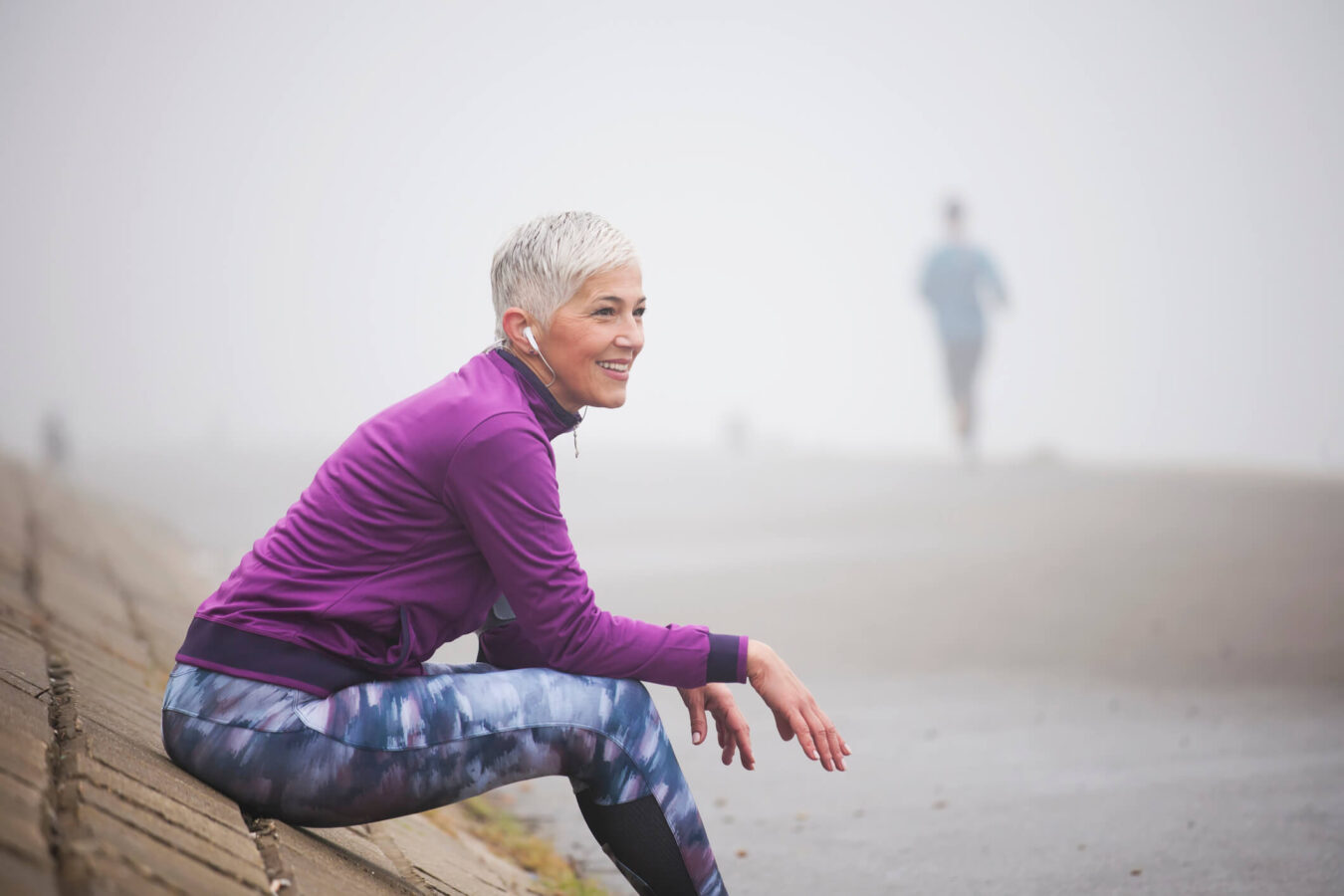
Osteoporosis is a disease that weakens bone mass and strength, making them prone to sudden fractures. The condition is highly-common, affecting an estimated 200 million people worldwide. After age 50, half of women and one-quarter of men will be diagnosed with osteoporosis—often after an unexpected break in a weakened bone.
Fortunately, you can take steps today to avoid osteoporosis if you don’t have it—or slow the progression of bone loss if you do. Interested in learning how to prevent osteoporosis? Here are our top osteoporosis prevention tips to keep your bones healthy and strong.
The term “osteoporosis” means “porous bone.” It refers to the loss in density, or thickness, that compromises bone strength in some people. Bone is living, growing tissue that is continually being diminished and replaced. In individuals with osteoporosis, bone loss happens faster than it is restored.
Think of the inner part of a human bone as a sponge (trabecular bone) surrounded by a dense outer shell (cortical bone.) With osteoporosis, the holes of the spongy area become larger, compromising the integrity of the entire structure, leaving it more fragile and susceptible to injury.
As mentioned above, women are more likely to develop osteoporosis, especially once they enter menopause. Age and gender are not the only risk factors for bone loss.
Additional risk factors for osteoporosis include:
Everyone plays a part in their own bone health. From what you eat to how you move, the choices you make every day have an impact on your bones (for better or worse.) If your goal is to prevent this disease before it occurs, or to strengthen already weak bones, follow these tips as a guide in how to prevent osteoporosis:
Osteoporosis has no real symptoms in the early stages, which is why it is considered a “silent disease.” As the disease progresses, someone with osteoporosis may appear to stoop over and they can have pain due to a collapsed vertebrae, or compression fracture. It is also the reason some people get shorter as they age. Yet for many individuals, a broken bone is the first sign of bone loss from osteoporosis.
Your health care provider should screen you for osteoporosis when appropriate based on your age, gender, and overall health. The most common type of Bone Mineral Density (BMD) test utilizes a special x-ray called a DEXA is used to measure bone density. Results are reported using T- and Z-scores.
The T-score compares the patient to a healthy 30-year-old adult with normal bone density. A T-score of -1 or less indicates a higher risk of experiencing a bone fracture. A T-score of -2.5 or less indicates a diagnosis of osteoporosis.
The Z-score compares the patient’s bone density to someone of the same age, weight, and gender. A low Z-score (-2.0) indicates rapid or significant bone loss. Ultrasound, CT scans, and other X-rays are also used to assess bone density.
If you are living with osteoporosis, know that is it never too late to take steps to improve your symptoms and bone quality by making certain lifestyle changes. They are not just good for bones; they are good for your entire body and mind!
Physical therapy is also ideal for patients with osteoporosis and other conditions associated with aging. Safe, supervised physical therapy helps to increase bone strength and slow bone loss, correct posture to protect against fractures, and improve balance to avoid falls. To learn more about how physical therapy can help you stay strong and active, schedule a screening at a clinic near you.

